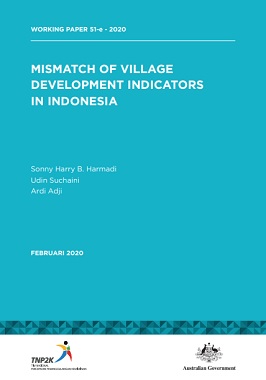Mismatch Of Village Development Indicators In Indonesia
The aim of this paper is to analyse the achievement of village development indicators in 2014 and 2018 after the release of Rp 250 trillion in Village Funds since 2015. There are three indicators related to village development in Indonesia, namely the Geographical Difficulty Index (Indeks Kesulitan Geografis: IKG) which is used as the basis for the Allocation Formula of the Village Fund and the Village Development Index (Indeks Pembangunan Desa: IPD) which measures the achievement of basic service development to meet minimum service standards (Standar Pelayanan Minimal: SPM) at the village level, and the Developing Village Index (Indeks Desa Membangun: IDM) that evaluates the continuity of village development. The three village development measurement tools have similar shortcomings, namely that there are indicators that cannot be followed up by village officials and policies in the village. The methodology used includes the Paired Comparative Indicator Change Test, namely by applying the McNemar-Bowker Statistical Test and Wilcoxon Signed Rank Test, with paired data at ordinal or interval scale but without normal distribution. The study on changes in the category of achievements in the village development indicators for 2014 and 2018, namely: (i) the availability of, and access to, TK/RA/BA;1 (ii) the availability of shops, minimarkets or grocery stores; (iii) the handling of extraordinary events (Kejadian Luar Biasa: KLB); (iv) village autonomy; and (v) village assets, found that there is no significant difference between 2014 and 2018. This indicates the existence of indicators that are not measured and the measurement of indicators that is not established through the Village Fund budget.
